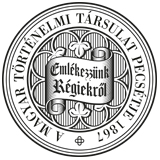Századok – 2018
2018 / 5. szám - HADÜGYI FORRADALOM – FISKÁLIS ÁLLAM – FISKÁLIS-KATONAI ÁLLAM EURÓPÁBAN A 16–18. SZÁZADBAN - Schramek László Péter: A magyar vármegyék szerepe a Habsburg Monarchia haderejének finanszírozásában. Egy 1730. évi felmérés tapasztalatai
SCHRAMEK LÁSZLÓ PÉTER 1149 alapot képeztek.139 Vasban egy portio domestica után 181 Ft 43 dénár adót kellett fizetni.140 Eszerint egy telkes jobbágy valamivel 45 Ft feletti, egy féltelkes 23 Ft, negyedtelkes 12 Ft, egy zsellér 6 Ft adót fizetett az államnak évente. A Helytartótanács 1730. évi felmérése alapján Magyarország adórendszere szinte áttekinthetetlenül színes volt, az adózók terhelése megyéről megyére eltért és ennek mértéke utólag gyakran ki sem következtethető. A modern történészeknek tehát szinte megyéről megyére kell megírniuk a kora újkori Magyarország adózási történetét, az egyszerűsítő sémákkal pedig le kell számolnunk. THE ROLE OF THE HUNGARIAN COUNTIES IN FINANCING THE MILITARY FORCES OF THE HABSBURG MONARCHY The Experiences of a 1730 Survey by László Péter Schramek SUMMARY The greatest challenge faced by the eighteenth-century administration was the provisioning of the army, an enterprise which, on account of the lacking military infrastructure, involved practically the entire population. Non-noble society provided various services for the military, all of which have been extensively analysed in the scholarly literature. Among these, the provision of winter quarters and forehorses constituted the most burden some obligation. The practice of county taxation in the eighteenth century, on the other hand, has received relatively modest attention. As far as can be known, it was still the poll tax commonly known as dica , a system combining elements of wealth and income, that was applied in the counties. In 1730, the Lieutenancy wanted to obtain a comprehensive overview of the system of taxation then in use in the counties. The reports sent in response to the queries help to identify several parallel practices, only one of which was the system known as the dica. The paper explores the circumstances which led to the survey, and emphasises the most important conclusions that can be drawn from its analysis. 139 MNL OL X 7828 22637. fd. 296–298. felv. 140 MNL OL C 20 Vas vm. 1730. aug. 7. 27r.
